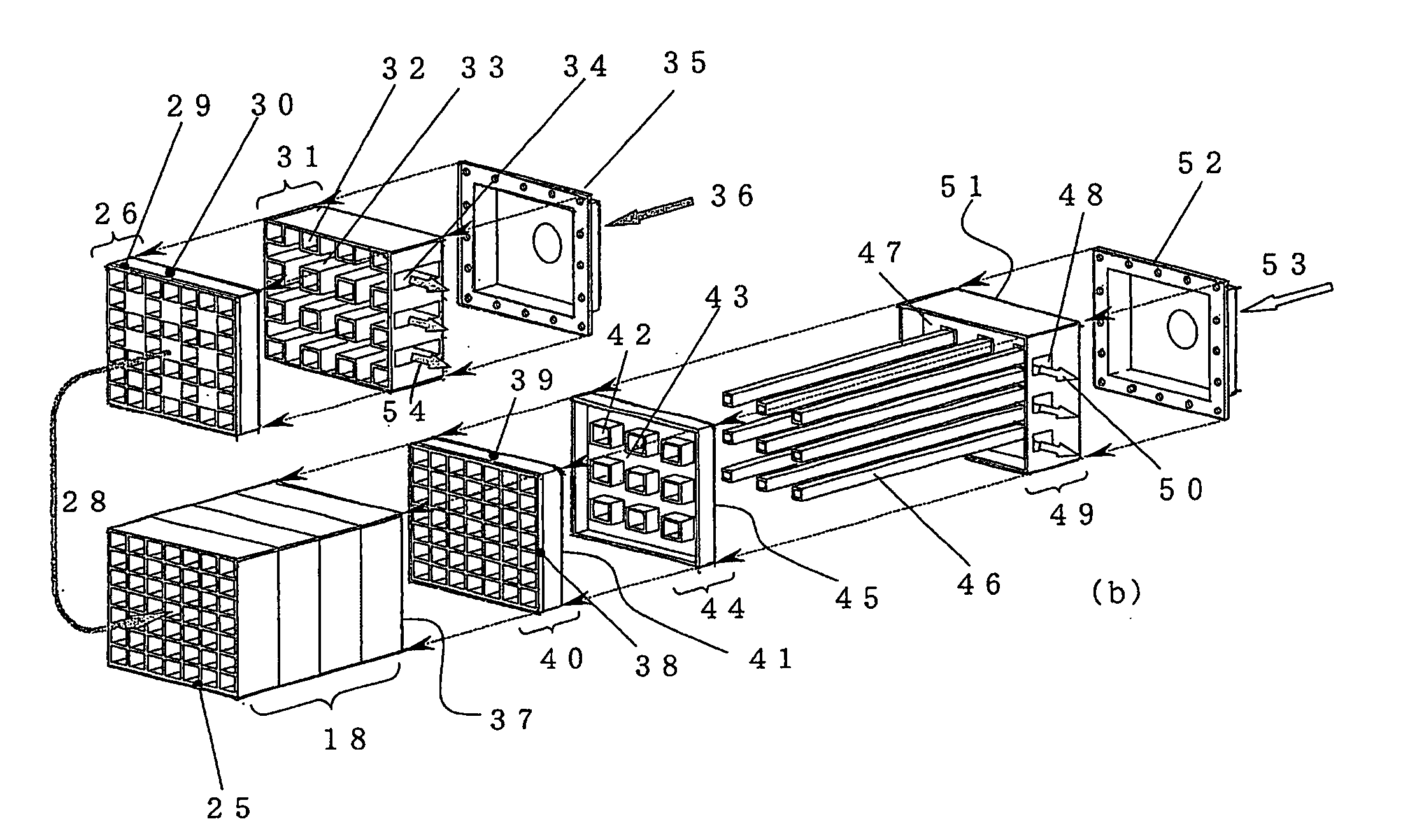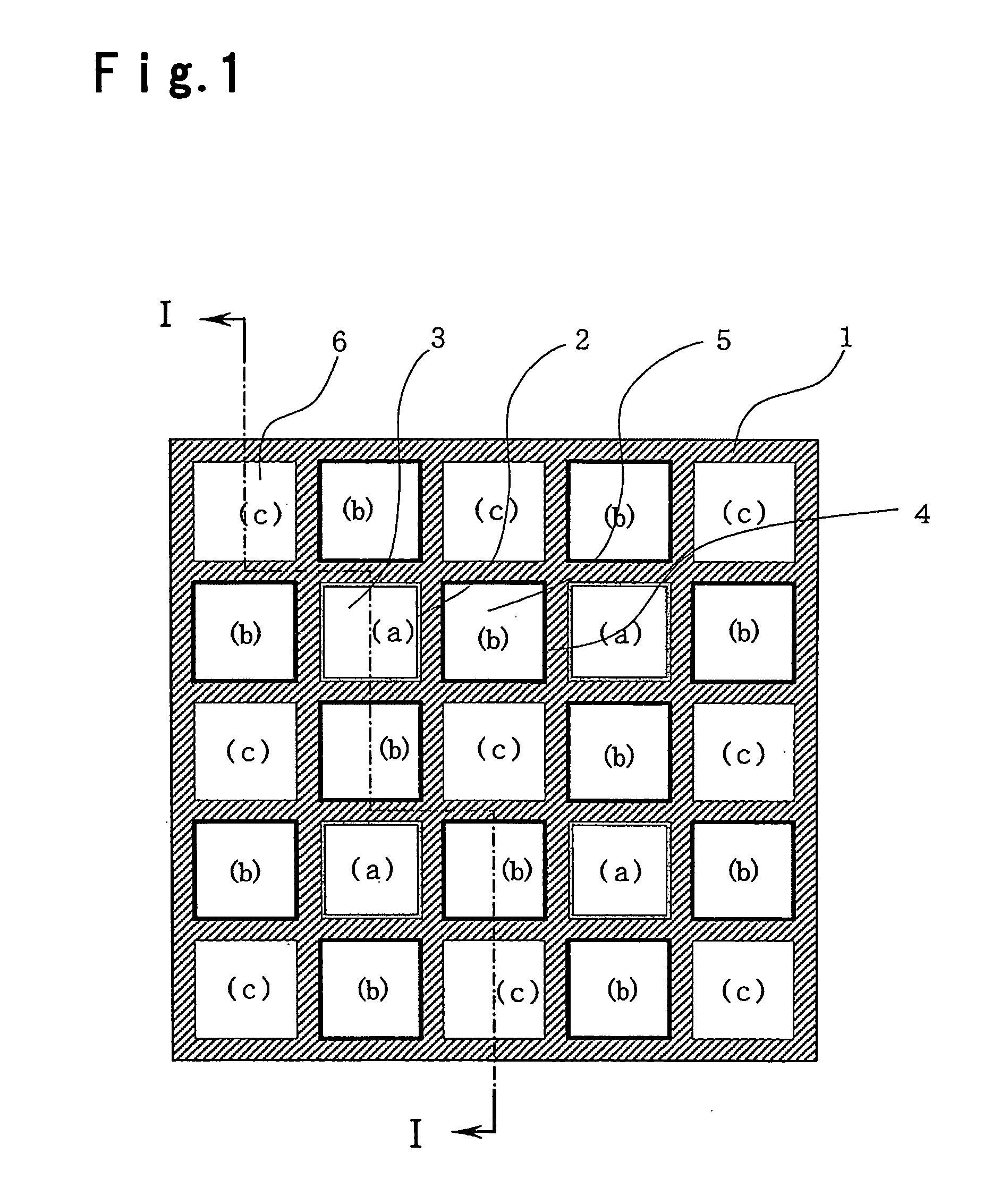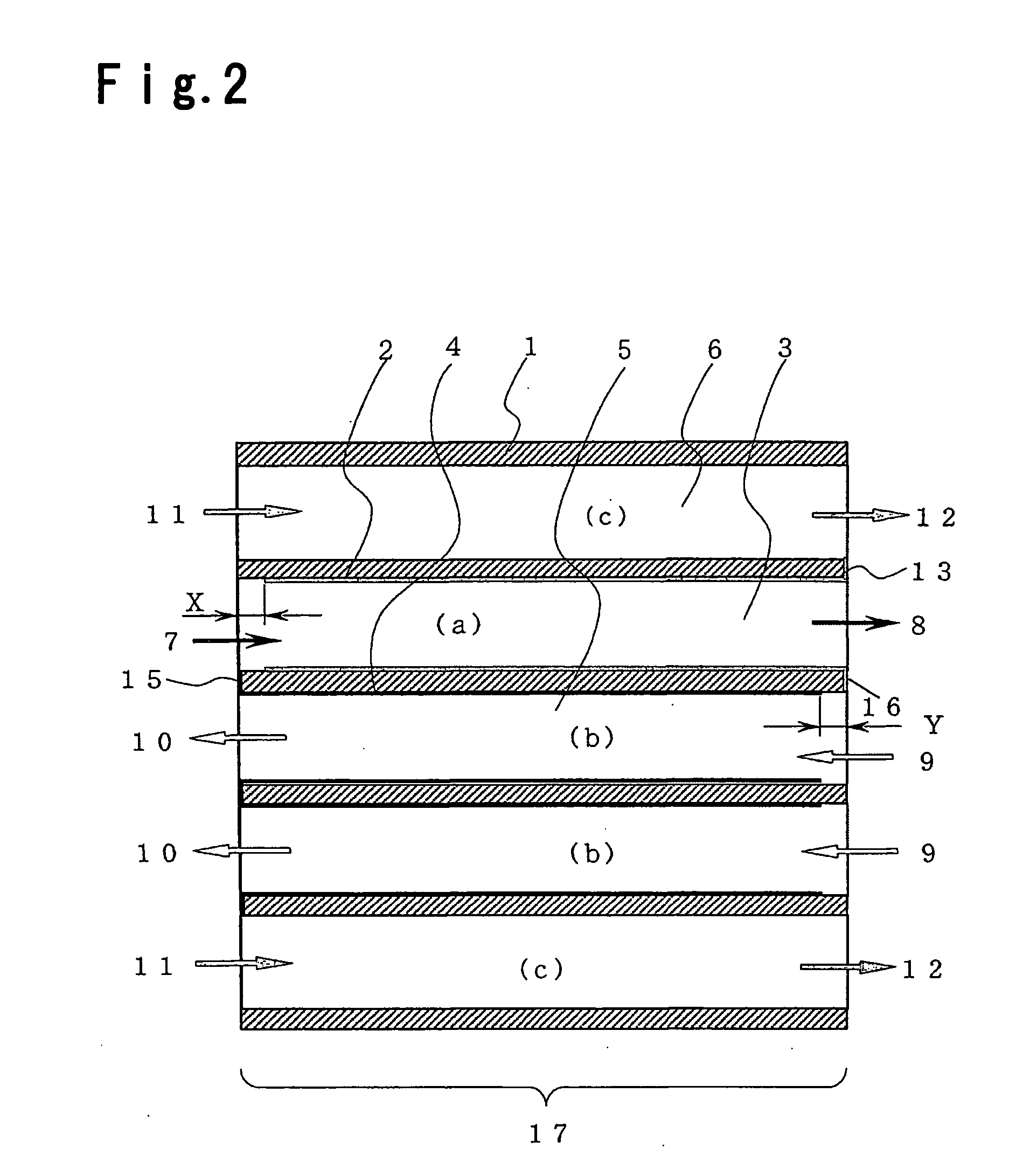Honeycomb type solid electrolytic fuel cell
a fuel cell and honeycomb technology, applied in the direction of cell components, final product manufacturing, sustainable manufacturing/processing, etc., can solve the problems of not always being the optimum energy-saving system, requiring a huge capital investment for social infrastructure, and it is difficult to assert the advantage of using them in comparison with existent heat engines, hybrid cars,
- Summary
- Abstract
- Description
- Claims
- Application Information
AI Technical Summary
Problems solved by technology
Method used
Image
Examples
example
[0059] An example of the solid-oxide fuel cell of the present invention will be described in more detail with reference to FIG. 4. The stacked type honeycomb fuel cell 18 shown in FIGS. 1 to 3 has the honeycomb structural body comprising cells of 5 rows and 5 columns. On the other hand, FIG. 4 shows the structure comprising cells of 7 rows and 7 columns, which is likely to be used practically. The structure and function in this embodiment, except for this point are substantially the same as those described with reference to FIGS. 1 to 3.
[0060]FIG. 4 shows a fuel cell depicted in a separate state to be two stages in vertical direction. However, the arrangement of two stages is made for descriptive purpose of the figure and in fact, all structural elements are connected linearly on a single center line.
[0061] The stacked type honeycomb fuel cell 18 has an air inlet / outlet-side end surface 25 to which a honeycomb-shaped air inlet / outlet-side collecting / insulating unit 26 in which onl...
PUM
| Property | Measurement | Unit |
|---|---|---|
| temperature | aaaaa | aaaaa |
| shape | aaaaa | aaaaa |
| diameter | aaaaa | aaaaa |
Abstract
Description
Claims
Application Information
 Login to View More
Login to View More - Generate Ideas
- Intellectual Property
- Life Sciences
- Materials
- Tech Scout
- Unparalleled Data Quality
- Higher Quality Content
- 60% Fewer Hallucinations
Browse by: Latest US Patents, China's latest patents, Technical Efficacy Thesaurus, Application Domain, Technology Topic, Popular Technical Reports.
© 2025 PatSnap. All rights reserved.Legal|Privacy policy|Modern Slavery Act Transparency Statement|Sitemap|About US| Contact US: help@patsnap.com



